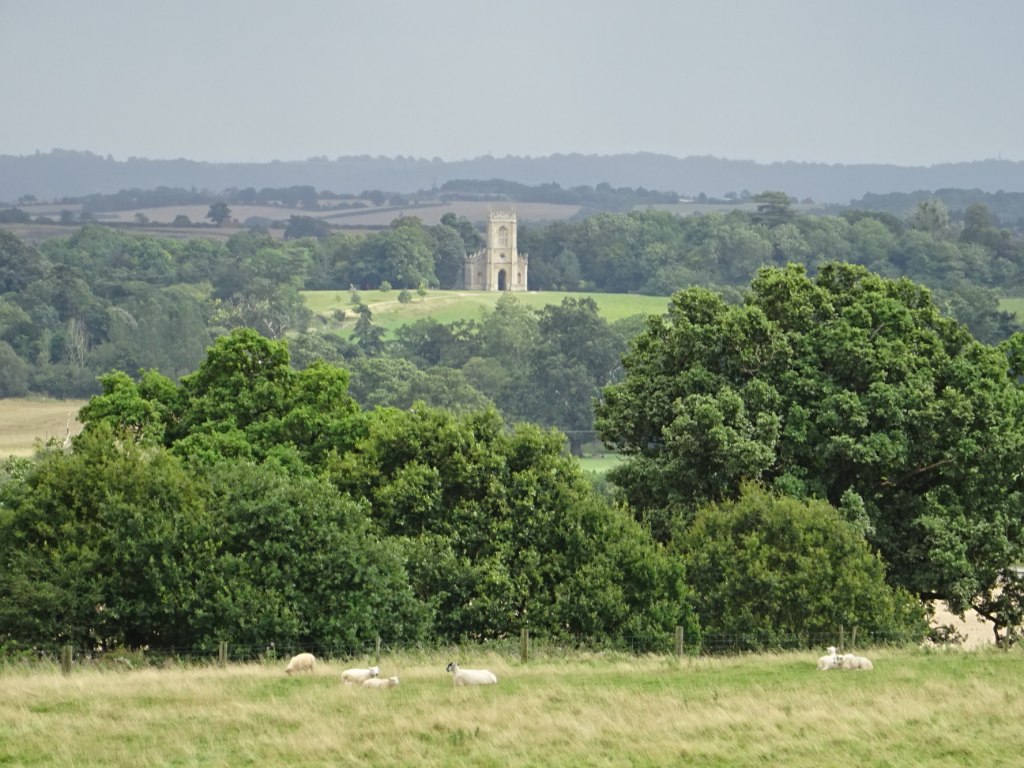Eyecatcher

|
| Croome D'Abitot church was built as an eyecatcher by 'Capability' Brown when he landscaped the park for the 6th Earl of Coventry in the 1750s. |
An eyecatcher (also referred to as eye catcher or eye-catcher) is a decorative structure usually built at a focal point in an English landscape park or on the grounds of a stately home to attract visual attention or otherwise punctuate the vista with a sense of drama.
Eyecatchers are sometimes natural items (such as large stones or tree arrangements) but they can also be buildings constructed in a particular style. These structures often have no specific purpose and in terms of design, they tend to mimic styles that are out of context - both geographically and historically.
Examples include:
- Sham ruins.
- Follies.
- Ornamental bridges.
- Faux temples.
- Conservatories.
- Grottoes.
- Obelisks.
Lancelot ‘Capability’ Brown was an English landscape architect of the 1700s who designed more than 170 parks and came to be celebrated as ‘England’s greatest gardener’. Brown’s style is characterised by the smooth grass of a garden leading straight up to a house, trees scattered in groups, and serpentine lakes formed by small rivers. His designs often included eyecatchers, which were meant to draw the viewer’s eye across the horizon.
[edit] Related articles on Designing Buildings Wiki
IHBC NewsBlog
Old Sarum fire in listed (& disputed) WW1 Hangar - Wiltshire Council has sought legal advice after fire engulfed a listed First World War hangar that was embroiled in a lengthy planning dispute.
UK Antarctic Heritage Trust launches ‘Virtual Visit’ website area
The Trust calls on people to 'Immerse yourself in our heritage – Making Antarctica Accessible'
Southend Council pledge to force Kursaal owners to maintain building
The Council has pledged to use ‘every tool in the toolbox’ if urgent repairs are not carried out.
HE’s Research Magazine publishes a major study of the heritage of England’s suburbs
The article traces the long evolution of an internal programme to research 200 years of suburban growth
IHBC Context 183 Wellbeing and Heritage published
The issue explores issues at the intersection of heritage and wellbeing.
SAVE celebrates 50 years of campaigning 1975-2025
SAVE Britain’s Heritage has announced events across the country to celebrate bringing new life to remarkable buildings.
IHBC Annual School 2025 - Shrewsbury 12-14 June
Themed Heritage in Context – Value: Plan: Change, join in-person or online.
200th Anniversary Celebration of the Modern Railway Planned
The Stockton & Darlington Railway opened on September 27, 1825.
Competence Framework Launched for Sustainability in the Built Environment
The Construction Industry Council (CIC) and the Edge have jointly published the framework.
Historic England Launches Wellbeing Strategy for Heritage
Whether through visiting, volunteering, learning or creative practice, engaging with heritage can strengthen confidence, resilience, hope and social connections.













